Abstract
The hypocotyl of different soybean genotypes was tested for its inducible phytoalexin (i.e. glyceollin or coumestrol) accumulation and its inducible soybean looper resistance in response to chemical elicitation. A very highly insect-resistant soybean genotype (PI 227687) produced significantly more phytoalexins than a relatively insect-susceptible one (Davis) in response to the same chemical elicitation. The resultant standardized hypocotyl assay allowed quick categorization of unknown soybean genotypes regarding the level of insect resistance in the fully developed plants. Glyceollin was a better indicator of inducible resistance than coumestrol. Elicitor concentration influenced the amount of glyceollin and coumestrol accumulated. Younger seedlings (4-5 d old) responded stronger to chemical elicitation than did older ones (7-10 d old). The elicited accumulation of glyceollin showed a temporal pattern that peaked at 72 h. Accumulation of coumestrol showed a gradual increase. Elicitation of phytoalexins in juvenile soybean plants by sulfhydryl-binding reagents was found to be useful for the prediction of genotypic differences in the level of insect resistance in the fully developed plants.
Full text
PDF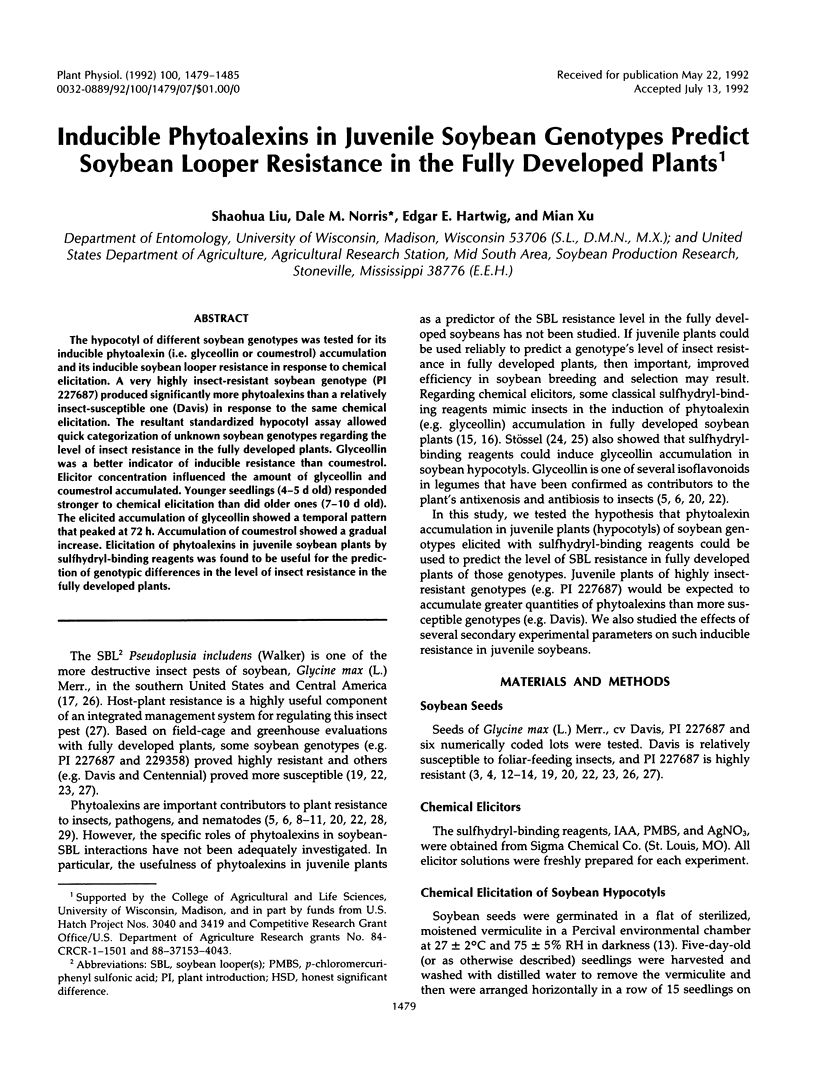
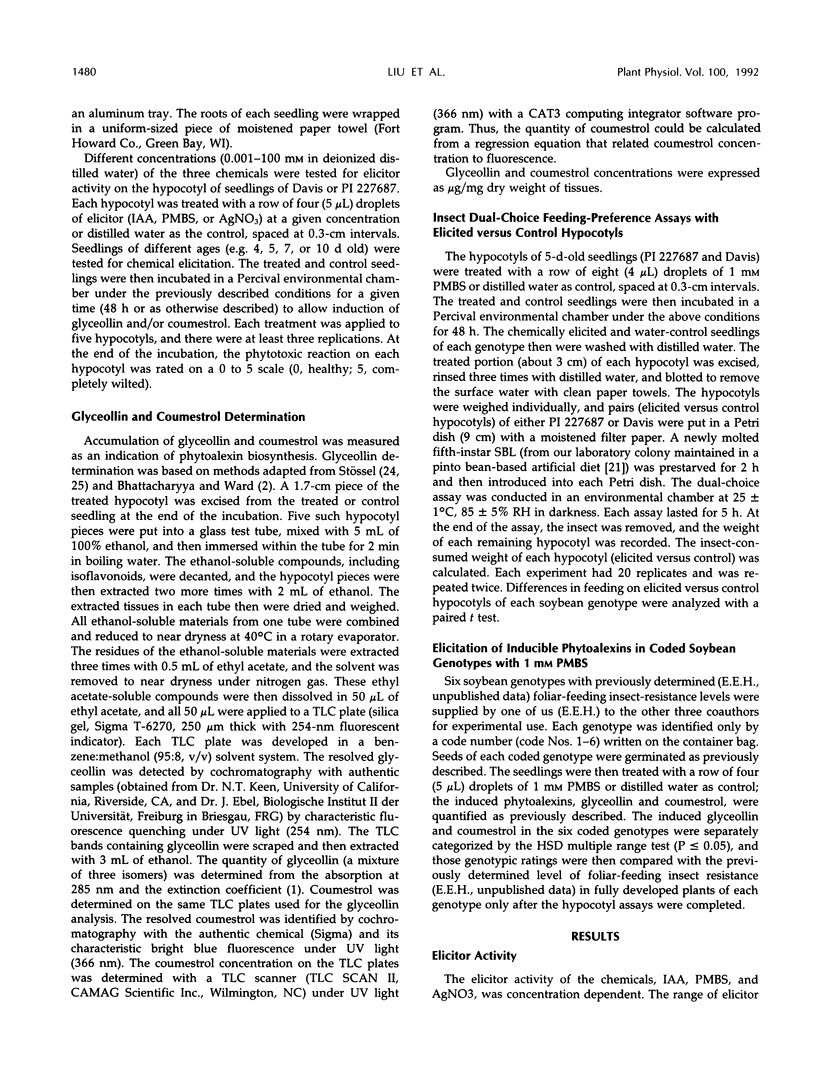
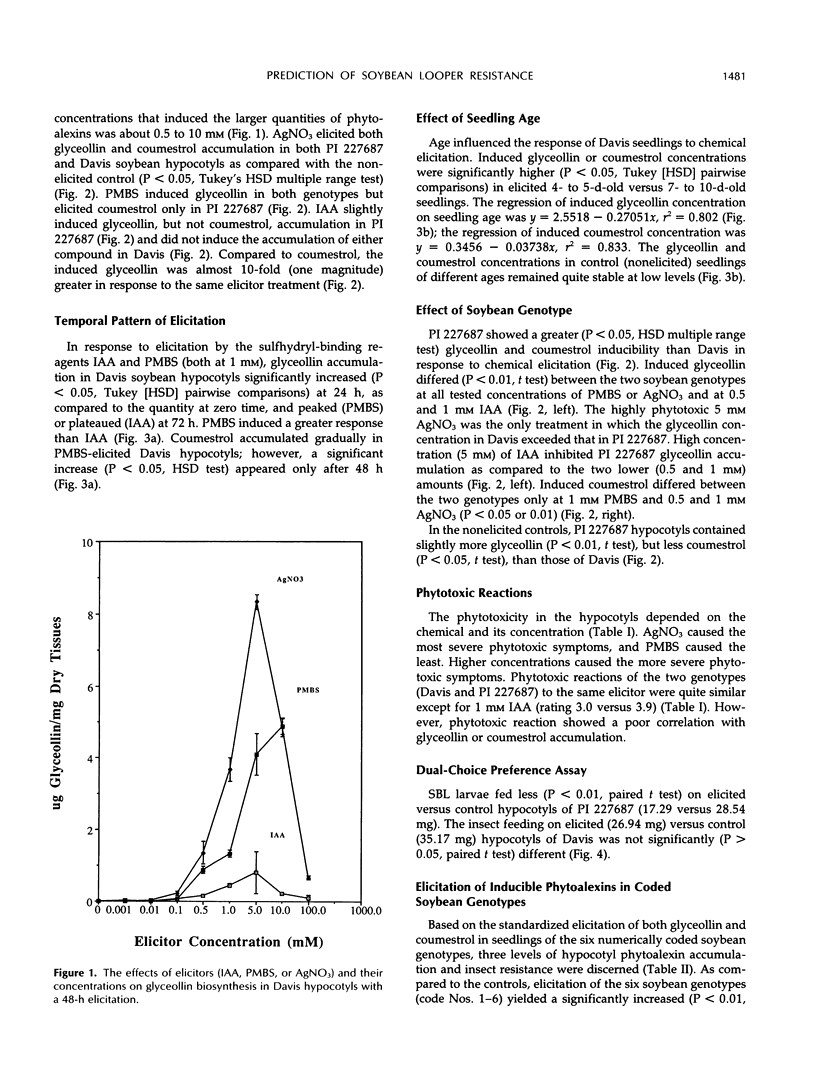
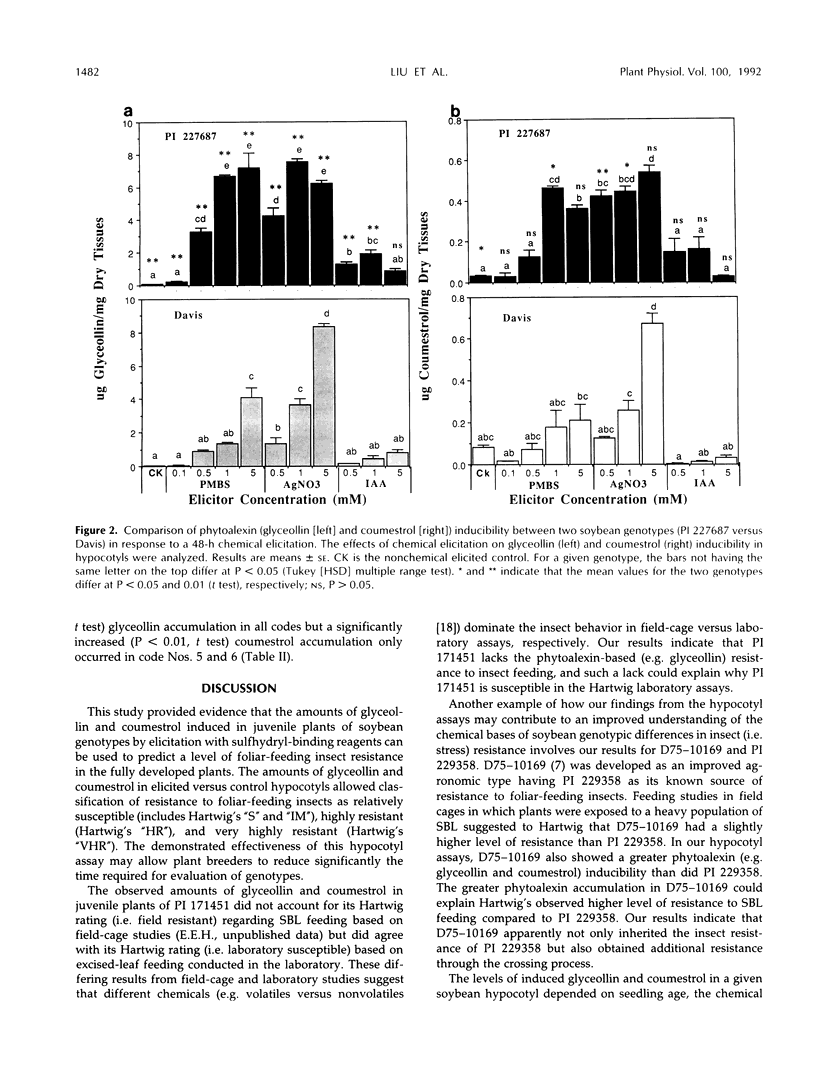
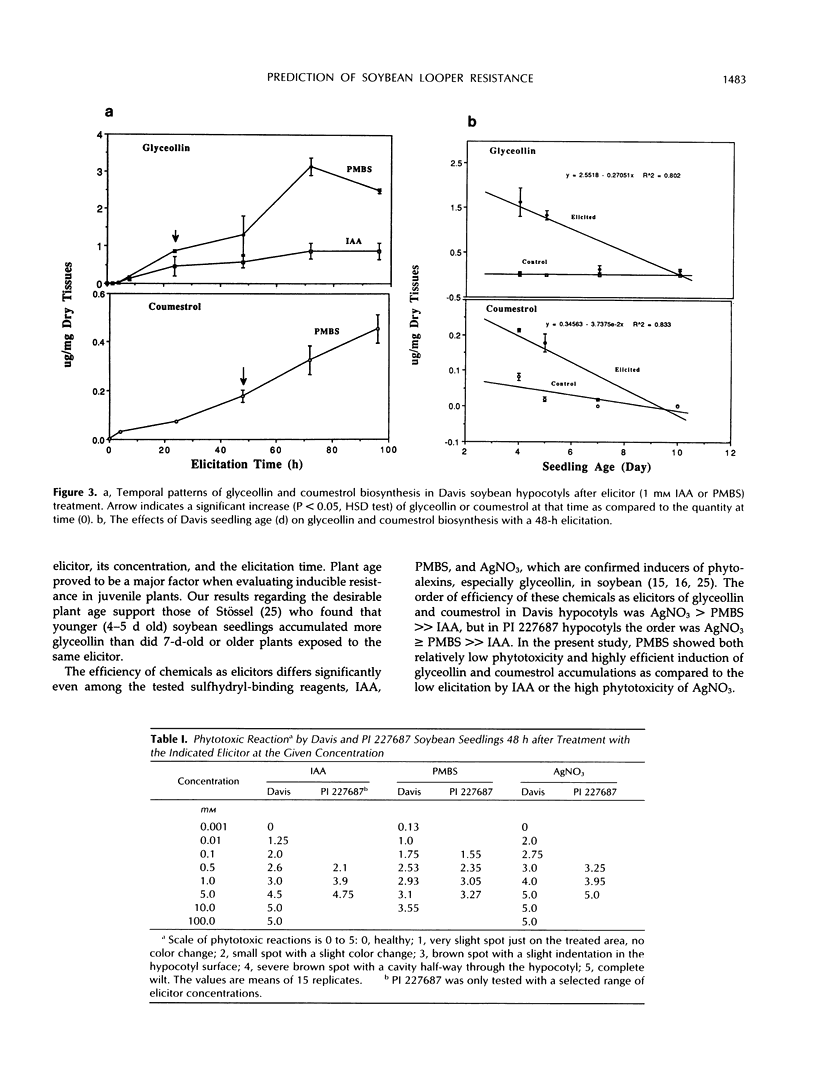
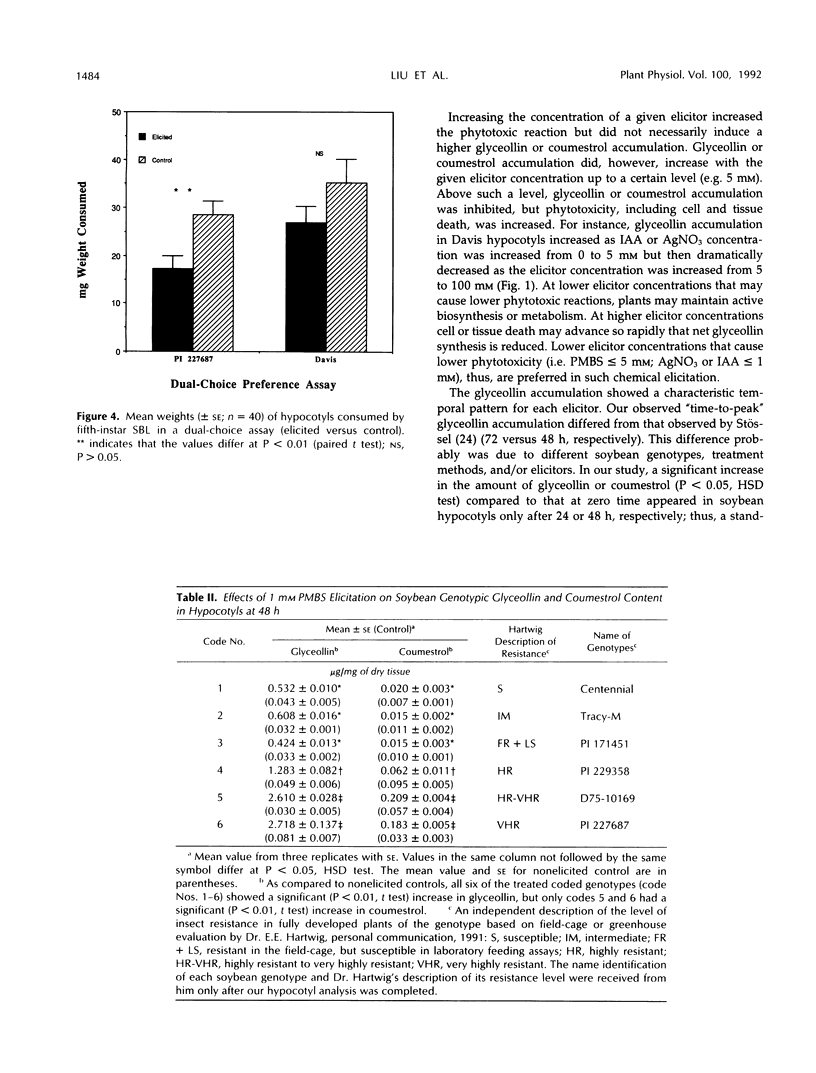
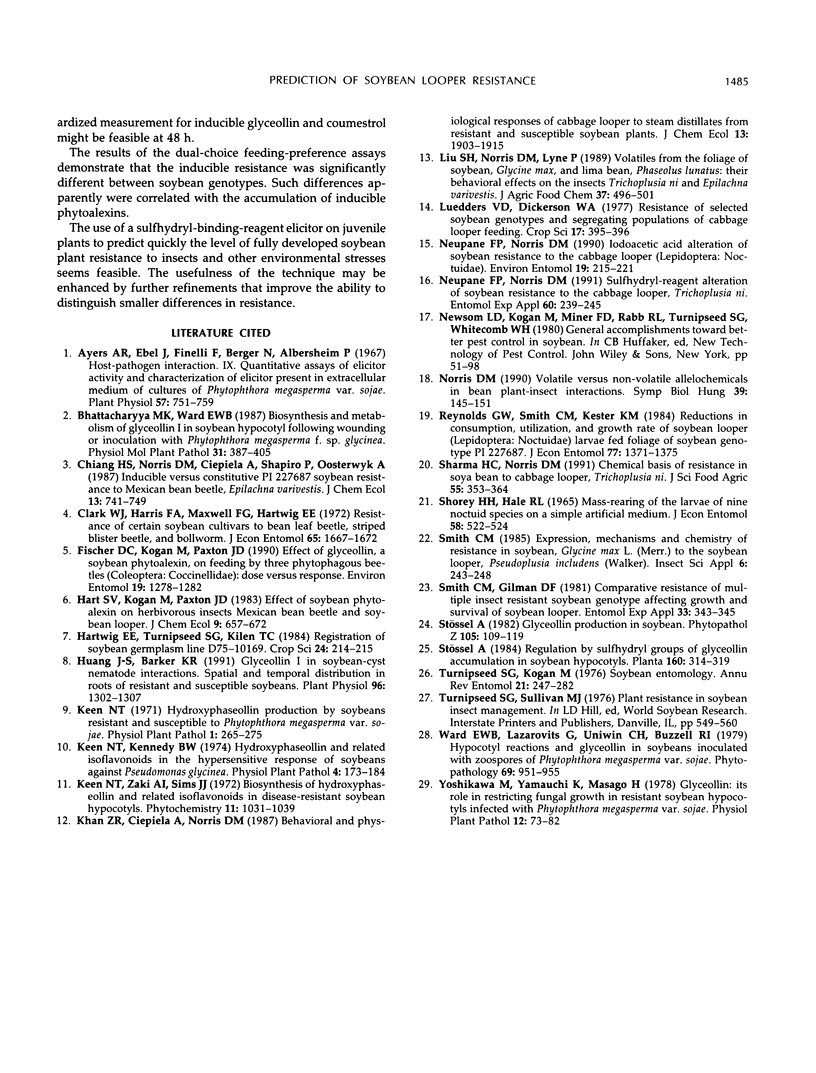
Selected References
These references are in PubMed. This may not be the complete list of references from this article.
- Ayers A. R., Ebel J., Finelli F., Berger N., Albersheim P. Host-Pathogen Interactions: IX. Quantitative Assays of Elicitor Activity and Characterization of the Elicitor Present in the Extracellular Medium of Cultures of Phytophthora megasperma var. sojae. Plant Physiol. 1976 May;57(5):751–759. doi: 10.1104/pp.57.5.751. [DOI] [PMC free article] [PubMed] [Google Scholar]
- Huang J. S., Barker K. R. Glyceollin I in soybean-cyst nematode interactions : spatial and temporal distribution in roots of resistant and susceptible soybeans. Plant Physiol. 1991 Aug;96(4):1302–1307. doi: 10.1104/pp.96.4.1302. [DOI] [PMC free article] [PubMed] [Google Scholar]


